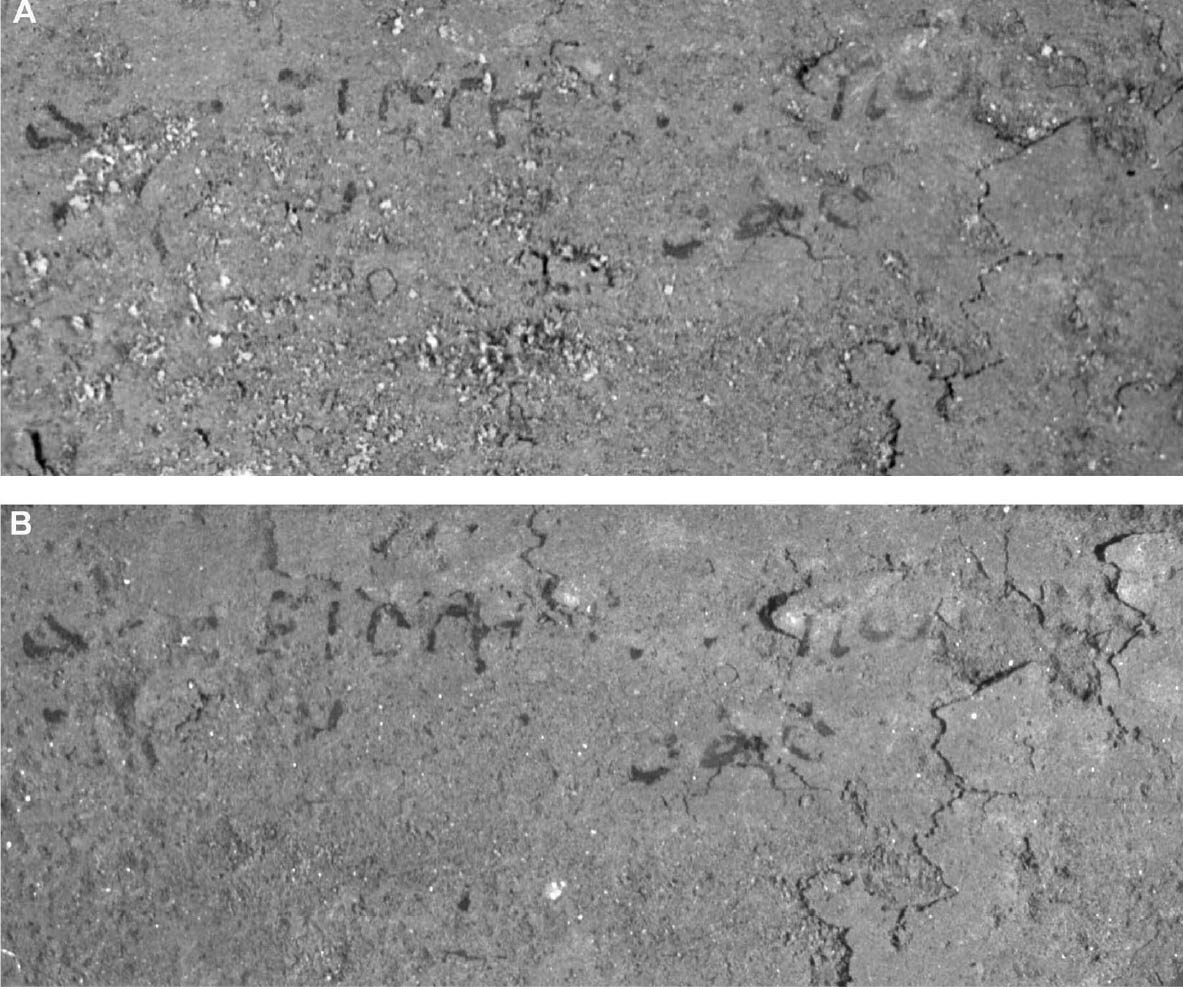THE USE OF CYCLODODECANE AS A TEMPORARY BARRIER FOR WATER-SENSITIVE INK ON ARCHAEOLOGICAL CERAMICS DURING DESALINATIONVANESSA MUROS, & JOHN HIRX
5 CONCLUSIONSThis study into the properties of cyclododecane has provided further insight into its hydrophobicity and a possible new use for this material in the treatment of archaeological objects. Adapting CDD's use as a temporary fixative for ink on art on paper during aqueous treatments, tests were developed and carried out to investigate the effectiveness of CDD as a temporary barrier for inscribed archaeological ceramics during desalination. Published examinations, and the authors' observations into the working properties of CDD, were used to define the parameters for a series of tests conducted on modern terracotta samples undergoing mock desalination. The samples tested, marked with two inks of different water sensitivities, showed that the application method used and the ink's sensitivity to water affected the behavior of the CDD film and how well the inscriptions were protected. The very water-sensitive ink was not protected by any of the CDD films. Both CDD in a petroleum ether solution and as a melt did create a better barrier for the less water-sensitive ink. The CDD melt film proved to be the most effective film in protecting inscriptions made with slightly water-sensitive ink from water damage during mock desalination. Based on these results, the desalination of an Egyptian ostracon was undertaken with successful results. This study is a preliminary investigation into this modified use of CDD and, it is hoped, will add to the ever-increasing body of knowledge concerning this material. These results may provide conservators with an alternative to the consolidation of pigments or inks on ceramics with acrylic resins or other materials that may be more permanent or difficult to completely remove, or which may alter the aesthetics of the object treated. This study has only begun to look into this particular use of cyclododecane, and, although further research is needed into the application of CDD to the desalination of inscribed archaeological objects, the results are promising.
ACKNOWLEDGEMENTSThe authors would like to thank Nancy Thomas, deputy director for curatorial affairs, and Victoria Blyth Hill, director of the Conservation Center at the Los Angeles County Museum of Art, for giving us the opportunity to conduct this research; Sara Caspi, conservator in private practice, for taking the time to discuss her CDD research; Brice Cantrell of the Department of Germanic Studies, University of Chicago, for his translation of the German articles; Alison Whyte, assistant conservator at the Oriental Institute Museum, for reading over and commenting on the early drafts; and Erik Risser, assistant conservator, Antiquities Conservation Department, J. Paul Getty Museum, for sharing his experiences with the use of CDD and for his editorial suggestions on the numerous versions of this article. |
